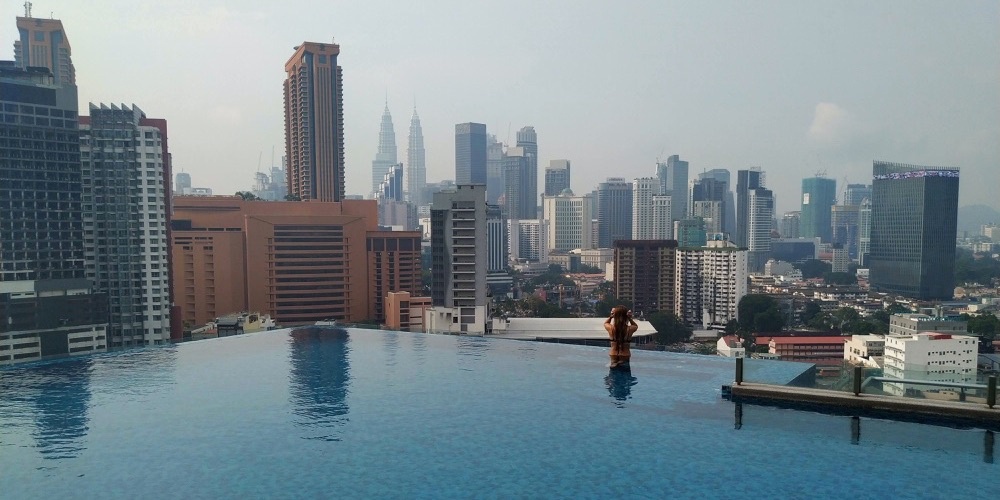We love Kuala Lumpur in short bursts. The city is fun, vibrant, and cheap if you know where to look. It’s also dirty, busy, and not at all walkable.
We spent a few weeks there working from cafes around Chinatown, but if you are going to stay long-term then we recommend the more up-market area of Bukit Bintang or Pudu.
The cover image for this post is actually from this condo where we spent my birthday. I found it on Airbnb for the ridiculously low price of €20 a night — and it was probably the nicest place we’ve ever stayed! I started my 29th year on this planet with a workout in the gym, followed by a swim in the rooftop infinity pool was incredible, and finished off with some beers overlooking the sparkling lights in Bukit Bintang was amazing!

Anyway, here’s our favourite places to get some work done in Chinatown:
Vintage 1988 Cafe & Accessories Store
This was our favourite spot and we worked here most days. It’s nice and big inside with lots of tables, all with power sockets. The coffee was excellent, the food was good but expensive, and the cakes were weird (they had a cheese cake, but it had actual grated cheddar cheese on top of a sponge cake…).
Pros: fast wifi, A/C, power sockets, good coffee
Cons: super busy at lunch times, not very ergonomic

Leaf & Co Cafe
This was a nice spot for the morning or afternoon, but it was too busy as a restaurant during peak times to focus. Plus, most of the chairs were just wooden stools.
Pros: fast wifi, good coffee, pretty interior
Cons: bad seating, too busy, too few power sockets
Mingle Cafe
This place is right next door to Leaf & Co and has the same kind of vibes. It’s a popular lunch spot for the wealthy locals and it fills up quickly at peak times. The staff are pretty miserable, and half of the tables are made out of old sewing machines — which is the absolute worst to sit and work at!
Pros: nice Western style breakfast, fast wifi, A/C (if you go far enough back)
Cons: poor customer service, expensive, bad seating
Merchant’s Lane
This cafe comes highly recommended for eating and working. It’s kind of hidden away, but every time we tried to go here there was a queue of 20 people waiting — I guess it must be good! Maybe it’ll be worth trying outside of peak times.
What we found was that in Chinatown, all the hipster and Western style cafes that we usually enjoy working from were popular with wealthy locals which made them too busy to spend the day working from. This is brilliant for the business owners, but wasn’t great for us to work.
We met up with a friend Jon Yongfook in Kuala Lumpur, who was staying much further away from the touristy parts and he worked from a Colony Coworking Space every day. If we return to KL to work again we will probably consider living further out in an apartment or condo so that we can cook and work from a proper space!
Check out my other posts for places to work from in Georgetown, and our experience living and working in Koh Tao for a month.
Next up, we finally head back to Bali to check out the exploding digital nomad scene there! Subscribe to read about our experience there :).
Originally published at travel.squarecat.io on 26 October 2019







